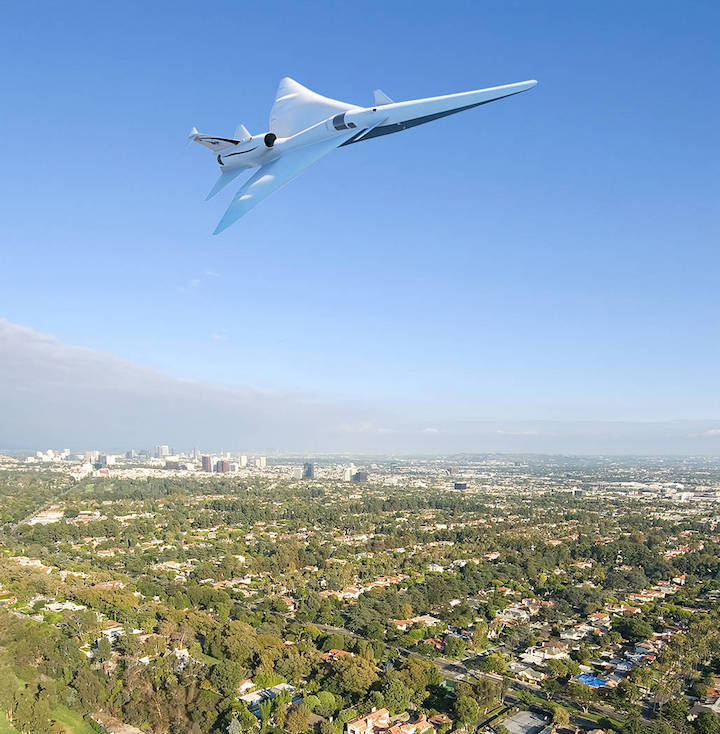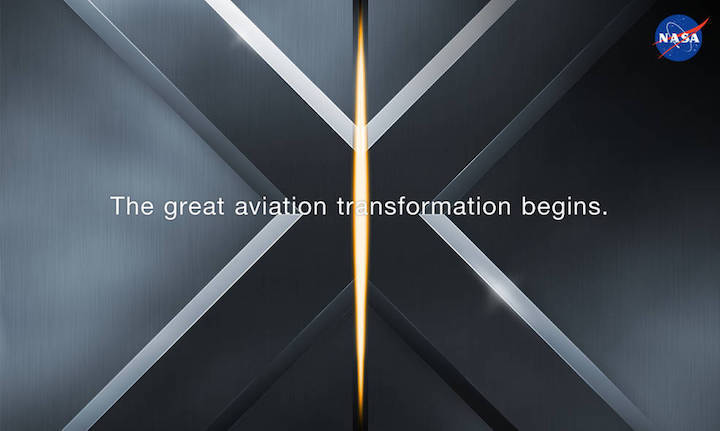3.04.2018

Aeronautical innovations are part of a government-industry partnership to collect data that could make supersonic flight over land possible, dramatically reducing travel time in the United States or anywhere in the world.
NASA's Low-boom Flight Demonstration mission has two goals: 1) design and build a piloted, large-scale supersonic X-plane with technology that reduces the loudness of a sonic boom to that of a gentle thump; and 2) fly the X-plane over select U.S. communities to gather data on human responses to the low-boom flights and deliver that data set to U.S. and international regulators. Using these data, new sound-based rules regarding supersonic flight over land could be developed, which would open the doors to new commercial cargo and passenger markets to provide faster-than-sound air travel.
This artist's concept shows a new Low-boom Flight Demonstration X-plane flying over land in the United States.
+++
Low-Boom Flight Demonstration Overview
NASA's aeronautical innovators are leading a government-industry team to collect data that could make supersonic flight over land possible, dramatically reducing travel time in the United States or anywhere in the world.
The Low-boom Flight Demonstration (LBFD) mission has two goals: 1) design and build a piloted, large-scale supersonic X-plane with technology that reduces the loudness of a sonic boom to that of a gentle thump; and 2) fly the X-plane over select U.S. communities to gather data on human responses to the low-boom flights and deliver that data set to U.S. and international regulators.
Using this data, new sound-based rules regarding supersonic flight over land can be written and adopted, which would open the doors to new commercial cargo and passenger markets to provide faster-than-sound air travel.
Elements of NASA's LBFD mission are organized within two of the agency's aeronautics programs -- the Advanced Air Vehicles Program and the Integrated Aviation Systems Program -- and managed by an LBFD systems project office whose members span both programs and all four of NASA's aeronautical research field centers: Langley Research Center in Virginia; Glenn Research Center in Cleveland; and Ames Research Center and Armstrong Flight Research Center, which are both located in California.
+++
The “X” era is here. We’re starting the design and build of a series of piloted experimental aircraft – X-planes – for the final proof that new advanced tech and revolutionary shapes will give us faster, quieter, cleaner ways to get from here to there.
+++
NASA Awards Contract to Build Quieter Supersonic Aircraft
NASA has taken another step toward re-introducing supersonic flight with the award Tuesday of a contract for the design, building and testing of a supersonic aircraft that reduces a sonic boom to a gentle thump.
Lockheed Martin Aeronautics Company of Palmdale, California, was selected for the Low-Boom Flight Demonstration contract, a cost-plus-incentive-fee contract valued at $247.5 million. Work under the contract began April 2 and runs through Dec. 31, 2021.
Under this contract, Lockheed Martin will complete the design and fabrication of an experimental aircraft, known as an X-plane, which will cruise at 55,000 feet at a speed of about 940 mph and create a sound about as loud as a car door closing, 75 Perceived Level decibel (PLdB), instead of a sonic boom.
Once NASA accepts the aircraft from the contractor in late 2021, the agency will perform additional flight tests to prove the quiet supersonic technology works as designed, aircraft performance is robust, and it’s safe to operate in the National Airspace System.
Beginning in mid-2022, NASA will fly the X-plane over select U.S. cities and collect data about community responses to the flights. This data set will be provided to U.S. and international regulators for their use in considering new sound-based rules regarding supersonic flight over land, which could enable new commercial cargo and passenger markets in faster-than-sound air travel.
Quelle: NASA

